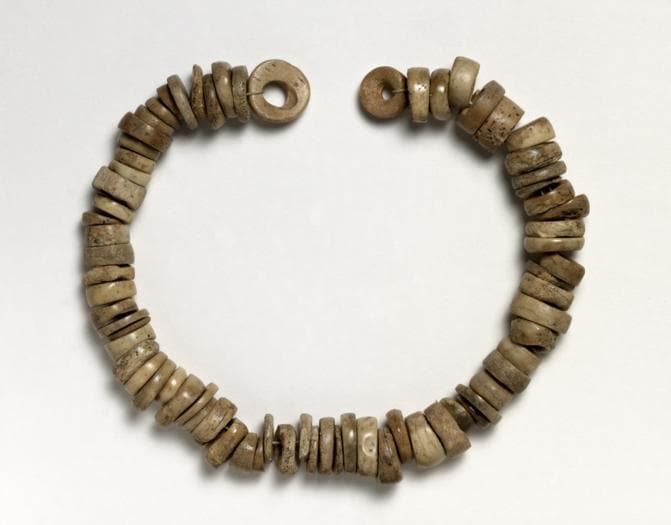It is a cold dawn in January. The frost covers the whole Salisbury Plainthe immense sweet valley of Wiltshiredominated by the famous monument of Stonehenge. A group of tourists is nervous: they risk having been up early, for nothing. They came to watch the sunrise from inside the most famous stone circle in the world. In the previous days, a thick fog covered the entire Stonehenge area. But they are lucky: clear skies, the sun comes out. And seeing it from inside Stonehenge is an almost mystical experience. It is understandable why the place has had an incredible fascination on people for millennia.
Once upon a time the sight of sunrise was free, today for a fee, not out of greed, but to preserve the most important artefact in Europe from the onslaught of mass tourism. The eternal charm of Stonehenge is the charm of mystery. The three concentric circles of colossal doors made with gigantic single stones fueled admiration and a sense of “sacred”: from Julius Caesar to the Normanspassing through England, Saxons e Vikingsnone of the many colonizers of the island over time has ever dared to violate the place.
A millennial myth
The myth of Stonehenge began almost immediately: in an ancient prehistoric tomb, a small stonehenge-shaped incense burner was discovered that dates back to 3 thousand years ago. A small model, like those who buy the souvenir of today Colosseo or of the Eiffel Tower. The fame of the archaeological site, in the modern age, is due to William Stukeley, an antiquarian of the ‘700, who first studied the monument in a scientific way and coined the name of Stonehenge which only means “round stone enclosure”: it is not known how it was called before and, above all, how the “owners” called it , the primitive men who built it. The British Museum, including founders figure Stukeley himself, inaugurated the first exhibition in its history. It took decades of research and studies to set up the exhibition, which cost around 1 million pounds with objects from all over Europe. It is also a tribute to Stukeley himself, who was one of the founders of the British Museum. Built in the same years as the pyramid of Giza and of Sphinx in Egyptaround the 3 thousand BC, Stonehenge, at first sight marks the beginning of Western civilization: it is, instead, the swan song, the apex that marks the end of an era. Epoch ended in a violent and traumatic way. So much so that, perhaps, Stonehenge, despite its grandeur, still after 5 thousand years, was never finished, but abandoned.
Stonehenge al British Museum
The exhibition at the London museum, it is called “The World of Stonehenge“, the World of Stonehenge. And in fact the ancient monument is only part of the exhibition. The fully successful ambition of the curator Neil Wilkinis to tell an entire era, which lasted about 10 thousand years: theStone Age in Europe. The majestic Sainsbury Gallery, the largest room in the museum, offers the visitor an astonishing overview of the continent as it was 5,000 years ago. In the very large variety of itemsben 430including an impressive fossil block of two oxen pulling a cart, and the precious disc of the sky di Nebraboth from Germany: it is the first astronomical map of humanity where the oldest representation of the constellation of the Pleiades of history. The exhibition clarity is the trump card of the exhibition: everything is displayed in a simple and understandable way. More than the vastness of the exhibition, it is the great didactic capacity that strikes the visitor.
The ice Age
The history of Stonehenge begins long before Stonehenge itself. Around the 10,000 BC, all of Europe is under a blanket of ice: England and France are united, the English Channel does not yet exist. But the last ice age is receding, the climate is milder, numerous nomadic hunterswho chase herds of animals, cross the frozen Channel and go to live there Great Britain. Six thousand years later, the descendants of these first inhabitants who live only by hunting are transformed into permanent inhabitants, thanks to a novelty arrived from the continent (in the meantime the ice has melted and Great Britain has become an island separate from Europe) : L’agriculture. It arrives in the cold lands of the North Sea 10 thousand years later than its discovery, in Mesopotamia around 15 thousand BC. These primeval farmerswho raise cows and oxen, have a habit of drive wooden posts into the ground: first single, then in a circle. The reason is perhaps that at the time Great Britain, like all of Europe, was covered with forests: to cultivate, however, you need fields. Neolithic men heavily deforest Europe to wrest land from wild nature. But a “sacred” link with trees remains: wood is used to build houses, wagons, tools. It is this agricultural society, which is based on a technology that knows only stone, that erects the great sacred place. How was Stonehenge built? And, above all, why? What was it for? Thousands of future generations will ask themselves: from haunt of magical rites of the ancient Druidsthe priest-sorcerers of the celtic religion, an artifact so sophisticated that only an alien civilization could have built. Onlookers, hippies, antique dealers, New Age followers or simply wanderers: Stonehenge has attracted everyone.

Mystery revealed
In fact, there is no mystery at Stonehenge: the historical truth has long been uncovered. But the truth is much less consoling than the mystery and perhaps for this reason the myth of Stonehenge continues to resist. As it was, without modern technologies, without machines, without electricity, without metals, to transport, work and raise gigantic stones: the largest ones came from hundreds of kilometers away and weigh tens of tons. Technological amazement has always been the greatest interest in the archaeological site: how was it possible that a primitive civilization could build such an imposing monument that even today it would be difficult to design. The answer is easier than it seems: time. It took about 1,500 years to build what visitors see today. The three stone circles are the result of centuries and centuries of enormous effort by thousands of men, a stratification of different eras and works: it is estimated that about 100 generations of people worked on the monument, using only deer antlers, hammers, stones, ropes and ropes. The project was modified so many times over the centuries and so much time passed that the last generations who finished it knew nothing, if not perhaps a vague mythicized memory, of those who started it. At the beginning, around 3 thousand BC, Stonehenge did not even have the stones that made it famous: it was just a moat, a circle dug in the earth. Then a first circle of stones was added, then a second with the stones in the shape of a door. And finally the impressive triliths always in the shape of a door but much larger: it is now 1,500 BC, the end of the Stone Age. A new object, the bronze, it came from Europe and is revolutionizing society. The age of metals begins: perhaps for this reason Stonehenge was not completed. The triliths are not in the shape of a circle, but in a horseshoe shape: since no other remains of these immense stones have been found, in the various excavations from 700 to today, it must be deduced that this was desired. Or that the “construction site” was abandoned before it was finished. This is one of the many minor mysteries of Stonehenge. The most intriguing one, however, is another.

